by Winding Pathways | Oct 14, 2021 | (Sub)Urban Homesteading, Chickens, Garden/Yard, Garden/Yard, Hoover's Hatchery, Nature
As we entered our driveway a frustrating sight greeted us. We were looking forward to picking the enormous seed heads of sunflower plants towering over the garden. Not this year. While we were gone, a windstorm toppled them a few weeks before they’d ripen.
That’s the way it is with gardening. Sometimes there’s a great success resulting in delicious meals. Then there are flops, like our sunflowers. We found more wind mischief. Several almost ripe pumpkins and squash had broken stems, dooming them to rot instead of ripening.
A Silver LIning
All wasn’t lost. We pitched the sunflower heads, pumpkins, and squash into our chicken run. Enthusiasm erupted as the hens eagerly devoured them. They pecked a hole in the squash and pumpkins, ate all their seeds, and then made quick work of eating the soft interior flesh. Soon all that remained was the tough outer skin of the pumpkin and the sunflower’s now seedless head. These went into the composter.
Chickens love garden debris and vegetables that don’t quite make it to our table. When fall closes down our garden we turn in the chickens. They chow down on bugs, weed seeds, and unripe vegetables. This makes clean-up easier and probably reduces next year’s insect and weed problems. A few days after Halloween our hens love snacking on our shriveling Jack O Lantern. They also relish seeds scooped out of winter squash and most vegetables left in the refrigerator a bit too long.
It was frustrating losing our sunflowers, pumpkins, and squash. Thanks to our industrious hens we were able to put them to good use.
-
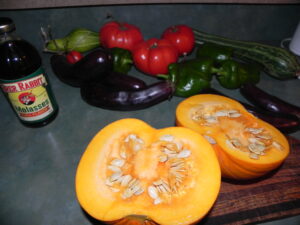
-
Seeds ready to eat.
-
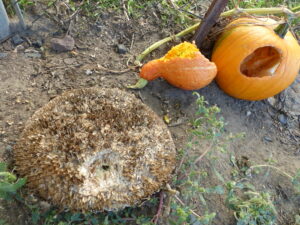
-
Holes pecked in pumpkin.
by Winding Pathways | Apr 1, 2021 | (Sub)Urban Homesteading, Garden/Yard, Garden/Yard, Nature
Winter Wanderers
We’ve been having more adventures with possums. Marion spotted a new visitor to the bird feeder one late February afternoon.
It was a smallish opossum. We called him “Pogo” after one of our favorite cartoon characters but didn’t realize we’d be playing tag with him (or her) for the next few weeks.
Pogo’s Feet
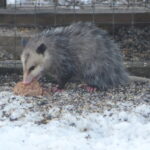
Possums’ feet help it hold food and climb.
Many people dislike possums and think they’re ugly and dumb. We like ‘em. They’re fascinating and love to eat ticks, including those that spread Lyme Disease. We find their paws especially interesting. Take a look at Pogo’s feet in the photos. They’re like strong-clawed hands that let him climb.
We spotted Pogo a few evenings later sniffing around our composter. He ambled off and scooted under a brush pile, where we assume he lived. That’s a fine place for an opossum to live so we left a scoop of dog food nearby for a late-night snack.
The next night Rich went out after dark to check the chickens in the barn. He turned on the light and there, staring at him from inside, was Pogo. Now, we like possums but not when they’re in the barn near the chickens.
Quite Comfortable

After eating an egg, Pogo took a nap.
I wondered, how in the world did he get in? We searched high and low for holes in the building big enough for a smallish opossum to squeeze through. There weren’t any, so we assumed he probably scooted in the open door during the day unseen. Rich ushered him out.
We didn’t see Pogo after that for a few days until Rich went out to gather eggs. There was Pogo napping in a nest! Our possum never seemed aggressive. He didn’t growl, snarl, or attempt to bite the shovel Rich used to scoot him out the door. He just opened his toothy mouth, stared at Rich as if to say, “What’s the problem?” and ambled to the brush pile. Again, we looked for possible openings and didn’t find any.
Quite at Home
No sign of Pogo for two more days. Then it was coop spring cleaning time. The chicken’s waterer was perched on two cinder blocks. Rich removed the waterer and went to pick up a cinder block when he saw a nose pointing out. There sat Pogo, curled up snugly inside one of the block’s cavities.
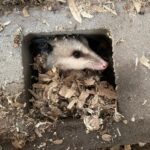
Opossum curled up in cinder block nest.
Again, all he did was stare and open his mouth as Rich explained that he was welcome to live under the brush pile but not in the barn.
We think we have the mystery solved. Pogo didn’t come into the barn after dark. He walked right through the chicken’s pop hole door when it was open during the day and made a home in the cinder block. It’s a great possum spot. He slept on soft wood chips and had plenty of fresh water and chicken feed nearby. Pogo probably snacked on an egg or two but never attempted to catch or kill a chicken.
We still want him to live in the brush pile but not in the barn. So, we now carefully monitor every nook and cranny in the barn before we lock the door at night. We haven’t seen Pogo in the coop lately and hope he’s relocated permanently to the brush pile.
by Winding Pathways | Feb 25, 2021 | (Sub)Urban Homesteading, Garden/Yard, Garden/Yard, Nature
November 5, 2020, was a perfect day for burning our prairie. We’d enjoyed several days of dry weather, and had our fire permit. We just needed a bit of breeze.
On that gorgeous day we burned the labyrinth, the backyard prairie, and our savanna…….and then we struck a match into our newest prairie. With the help of Linn County Roads and Air Pollution Departments, Pheasants Forever, the Monarch Research Project, UNI, and Sustainable Landscape Solutions we had prepared the soil and killed the weeds last May. Then we broadcast a native seed mix containing 82 species.
Prairie’s slow to start. We didn’t expect much this first year and ended up with lots of crabgrass. It grew to about 8” and dried out nicely. A slow fire removed most of it, allowing sunshine to warm prairie plants beneath. We expect a resurgence of delightful plants next spring and summer.
-
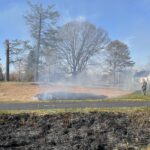
-
We burned the new prairie to encourage the native plants.
-
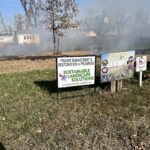
-
Several organizations and businesses are collaborating to create and manage the prairie.
by Winding Pathways | Feb 11, 2021 | (Sub)Urban Homesteading, Garden/Yard, Garden/Yard
Winter Readiness
Recently Rich donned a heavy jacket, gloves, and hat then ventured through swirling snow to the mailbox. He returned with seed catalogs. Seems early but there are two good reasons why we like to receive them in the depth of winter.
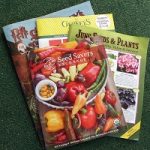
Seed catalogs make great winter reading.
First, they make fun reading as we sit in the cheery glow of the woodstove. It’s pleasant to see photos of colorful vegetables. Makes us long for spring.
Second, they remind us it’s time to buy our seeds. Gardening was amazingly popular last year as Coronavirus confined millions of people to their homes and potential food shortages were a concern. So many people bought seeds that they were hard to find. The lesson: Buy early.
We manage our small garden intensively and mix composted chicken manure into the soil. It makes vegetables seemingly explode in growth.
Here’s how we buy seeds:
Mail Order: Our favorite mail-order seed source is Seed Savers Exchange (seedsavers.org) in Decorah, Iowa. They specialize in organic, non-hybrid, non-GMO seeds. In other words, they sell classic vegetable varieties. We eat many winter squash, and Seed Savers sells a wide diversity of varieties. Our favorite is Silver Bell. It’s full of flavor, keeps all winter, and is just the right size for two people. We have ordered seeds from large format catalogs that come to our mailbox unrequested. They’ve been good seeds, but they tend to have fewer varieties of winter squash and some other vegetables. Most also sell flower seeds and fruit trees.
Over the Counter: Right after January 1st, home and garden stores put out their garden seeds. We often buy a dozen or so of the small envelopes of seeds.
Generally, they sell seeds packed by two types of companies. One is name brand seeds. The other is packets sold by companies with names we don’t always recognize. They are much less expensive than name brands. We usually buy some of each type and have had good success with the less expensive ones.
A Planting Tip
Lettuce, carrots, parsnips, radish, and many other seeds are tiny. It’s easy to plant them too close together. That results in tedious thinning in a month or two. We take the time to plant the seeds further apart to reduce the thinning chore. This also stretches the seeds in the envelope to produce more food. Often, we replant early vegetables and get a second, late-season crop.
-
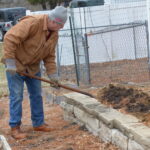
-
Use chicken manure to enrich the soil.
-
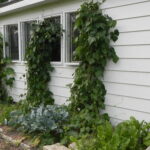
-
Save space and cool the cabin.
-
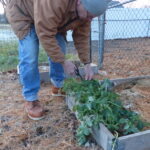
-
Intensive gardening maximizes space
Baby Chicks May Also Be in Short Supply
Last year hatcheries had trouble meeting the demand for baby chicks. Some customers were disappointed that they weren’t able to buy the breeds they wanted. We place our order at Hoover’s Hatcher (hoovershatchery.com) in the winter so we get the chicks we want at the best time for us.
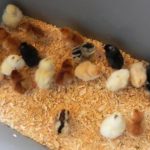
Chicks need to be warm until their insulating feather grow.
Seeds or baby chicks……order early.
by Winding Pathways | Jan 21, 2021 | 1080 Labyrinth Blog, Garden/Yard, Gazette Features, Nature, Travel/Columns
Actually, 2020 has been incredibly busy for Winding Pathways writing in 2020. This winter we invite you to grab a warm beverage, curl up, and take in some of our features in the Cedar Rapids Gazette.
December 20, 2020. Walking Cemeteries. https://www.thegazette.com/subject/sports/outdoors/a-peaceful-outdoor-walking-option-20201221
December 14, 2020 Iowa Meat Lockers: https://www.thegazette.com/subject/sports/outdoors/a-meaty-adventure-20201214
Nov 11, 2020 Iowa’s Inland Seas. https://www.thegazette.com/subject/sports/outdoors/enjoying-iowas-inland-seas-20201111
Sept 27, 2020: New Life to dead Trees. https://www.thegazette.com/subject/sports/outdoors/dead-trees-give-life-20200927
September 20, 2020: Walk Outside Safely. https://www.thegazette.com/subject/sports/outdoors/get-outside-and-walk-but-stay-safe-20200920
September 9, 2020: Rebirth Amid the Rubble https://www.thegazette.com/subject/sports/outdoors/a-rebirth-among-the-rubble-of-trees-20200906
August 22, 2020: Iowa’s National Parks. https://www.thegazette.com/subject/sports/outdoors/iowa-national-parks-guide-effigy-hoover-20200822
July 27, 2020: County Parks. https://www.thegazette.com/subject/sports/outdoors/take-advantage-of-iowas-county-gems-20200727
July 11, 2020: Tenting. https://www.thegazette.com/subject/sports/outdoors/why-rv-live-isnt-for-these-senior-tent-campers-20200711
June 26, 2020: Bear Sightings in Iowa: https://www.thegazette.com/subject/sports/outdoors/why-rv-live-isnt-for-these-senior-tent-campers-20200711
April 12, 2020” Walk on Wilder side. https://www.thegazette.com/subject/sports/recreation/take-a-walk-on-the-wilder-side-20200412
by Winding Pathways | Oct 8, 2020 | (Sub)Urban Homesteading, Birds, Garden/Yard, Nature
The August 10 derecho changed Cedar Rapids, and Winding Pathways wasn’t spared. We lost 47 of our 53 large trees during the 40-minute windstorm. It greatly altered our restoration plans. Here’s what we did or plan to do in response to the loss of trees.
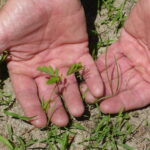
Prairie plant
New prairie plot: We planted this in early May. As expected, we only saw a glimpse of prairie plants in its first growing season, although early prairie plants give us promise that many more will appear next year. We will try to burn it either this fall or early next spring.
The derecho helped the prairie by felling or breaking four Douglas firs, one black oak, and one green ash. Two of these trees cast some morning shade on the prairie. The rest shaded it some in the late afternoon. They’re gone, so the site will enjoy more sunshine, and prairie loves sun. We mourned the tree loss but the prairie will benefit.
The trees didn’t go easily. Several tumbled into the prairie. They were big and filled with branches, leaves, and needles. We prioritized removing them. Many chainsaw and brush hauling hours later we had the trees moved into a big brush pile in the back. The sun now shines on the prairie planting. We’ll keep you posted.
-
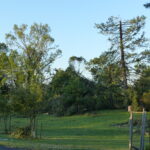
-
The firs and oak smothered the emerging prairie.
-
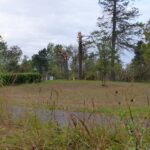
-
The firs shaded the prairie. Now more sun will shine.
Derecho Creates Opportunity
After we cleared fallen trees from the prairie, we turned to many trees that tumbled down on the north and east ends of our land. It’s taken hours to cut shattered trees and cut pathways through fallen logs so we can walk our own land easily. This land was once shady. Now the sun hits the ground. The storm transitioned the land from dense forest to savanna – a landscape of occasional trees and rich plant growth hugging the ground. Wildlife will transition as the habitat changes. Because of this change in the forest, some bird species may decline temporarily and others will thrive.
Open woodland birds: Robins, cardinals, white-eyed vireos, flickers, and Downey, red-bellied, and red-headed woodpeckers.
Mature forest birds: Scarlet tanagers, ovenbirds, wood thrushes, and pileated and hairy woodpeckers.
Shade and Sunshine
We didn’t lose all our forest trees. Just most of them. The loss of shade creates opportunities for ground-hugging plants to thrive, including baby trees. We’re already found some tiny black raspberry plants growing and many oak and hackberry seedlings.
To make sure that appropriate native savanna plants establish in the now sunny areas we ordered a native seed mix from Pheasants Forever that we’ll plant this fall.
We will keep you posted on changes in our prairies and new savanna.















